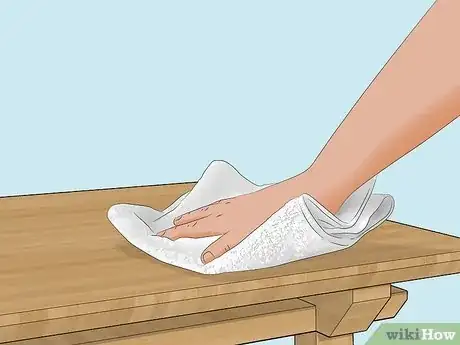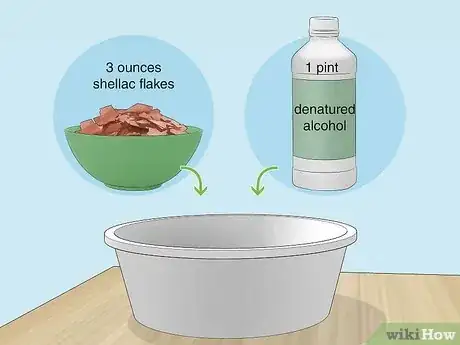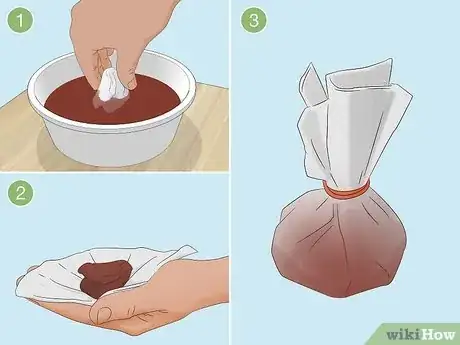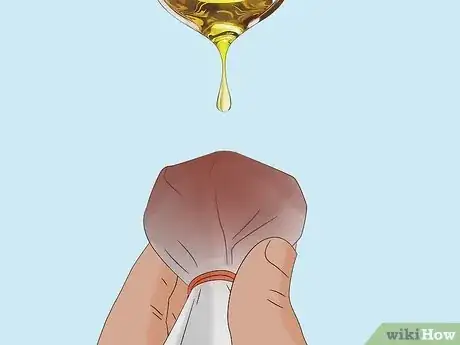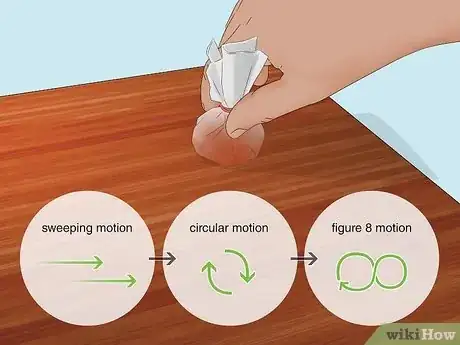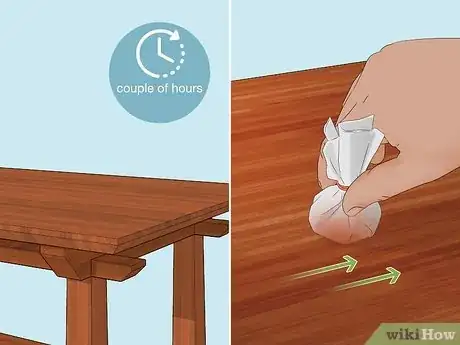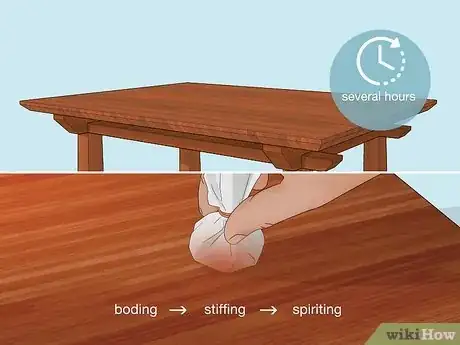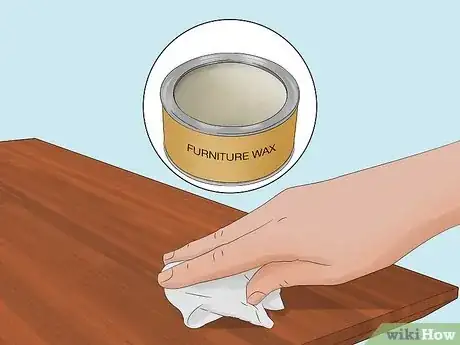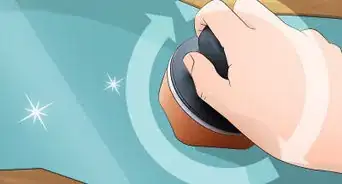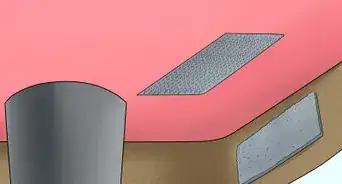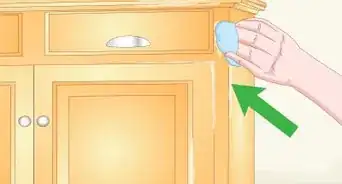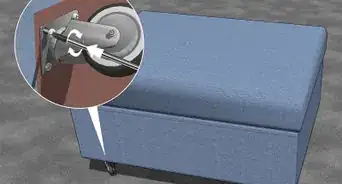This article was co-authored by Eduardo Peralta. Eduardo Peralta is a House Cleaning Specialist and the Manager of Best Maid House Cleaning based in San Jose, California. With over five years of experience, Eduardo and the Best Maid House Cleaning team specialize in home deep-cleaning, post-construction cleaning, and green and eco-friendly cleaning services. Best Maid House Cleaning is fully licensed and insured.
wikiHow marks an article as reader-approved once it receives enough positive feedback. In this case, several readers have written to tell us that this article was helpful to them, earning it our reader-approved status.
This article has been viewed 170,541 times.
French polish is a high-gloss finish for wood that consists of shellac. It is difficult to apply and requires a lot of work, but the end result is worth the effort. A French polish is popular on guitars and other wood string instruments because it sits on top of the wood instead of soaking into it, which would change the way the instrument sounds. It's also a popular finish for furniture because of its mirror-like shine.
Steps
-
1Begin with a clean, perfectly smooth wood surface and a clean, dust-free, warm room. Any imperfections in the wood or dust that settles onto the surface while you're working will show up in the polish. A cold room will cause the polish to be cloudy.[1]
- Make sure that the surface is clean before you get started—you can wipe down any sticky spills with a damp microfiber towel.
-
2Mix 3 ounces of shellac flakes with 1 US-pint (470 ml) of denatured alcohol. Keep the mixture in a tightly sealed container, pouring small amounts into a shallow bowl as you work. Although you can buy shellac already mixed, the fresher it is, the better the results will be. Use gloves when working with shellac.[2]Advertisement
-
3Soak a wad of gauze in shellac, then place it inside a cotton cloth (a piece of an old bed sheet or white tee-shirt works well). Tie up the ends of the cloth with string to make a sort of handle. Squeeze the pad to force most of the shellac out.
-
4Add a few drops of olive oil to the pad. You may want to use an eyedropper to keep from adding too much. The purpose of the oil is to keep the pad from drying out and sticking as you apply shellac. If the pad does start to stick, add another couple of drops of oil.[3]
-
5Apply the shellac to the wood surface in a gliding or sweeping motion, working one small area at a time, perhaps 2 square feet. Gradually change to circular, then figure-8 motions. Each sweep will leave a thin layer of shellac, and your goal is to leave about 100 of these layers in one boding session.[4]
- The shellac will dry quickly, so using an improper motion will leave an imprint of the pad on the surface.
-
6Build a fresh pad, then add a few drops shellac and several drops of alcohol to the cloth. Begin your stiffing session by sweeping the pad in even strokes from one side to the other to smooth out any unevenness in the shellac. Take care not to remove any shellac.
-
7Allow the work to sit for a couple of hours so any oil can come to the surface.[5] Then repeat the stiffing session to remove the oil. This is a separate step called spiriting.
-
8Let the work sit for several hours so it can dry completely, then repeat the boding, stiffing and spiriting sessions. You will do this several times to build up a thick shellac surface on the wood.[6]
-
9Polish the surface with rottenstone and olive oil. Place the rottenstone in a salt shaker and sprinkle it on the surface, then apply a few drops of olive oil to a fresh pad and rub the entire surface until you're satisfied with its appearance.
-
10Finish with a thin coat of furniture wax to help protect your French polish from damage.[7]
Community Q&A
-
QuestionIs it difficult to French polish a table if you have not done it before?
 Community AnswerIt is. You need to practice a lot. Try it on a test piece first and practice a little bit.
Community AnswerIt is. You need to practice a lot. Try it on a test piece first and practice a little bit. -
QuestionCan I French polish pine?
 Community AnswerYes, absolutely! Just make sure it's sanded smooth, and you've got all the dust cleaned off. It might also be worth sealing off any knots on the visible face.
Community AnswerYes, absolutely! Just make sure it's sanded smooth, and you've got all the dust cleaned off. It might also be worth sealing off any knots on the visible face. -
QuestionHow do I fill scratches on a wood surface?
 Community AnswerBuild it up in layers, then sand down to blend with the thickness of the surrounding area.
Community AnswerBuild it up in layers, then sand down to blend with the thickness of the surrounding area.
Warnings
- Denatured alcohol is flammable.⧼thumbs_response⧽
- Furniture with a French polish is beautiful, but easily marred.⧼thumbs_response⧽
Things You'll Need
- Shellac flakes
- Denatured alcohol
- Olive oil
- Gauze
- Cotton cloths
- String
- Vinyl or Nitrile gloves
- Containers with tight lids
- Furniture wax
References
- ↑ https://www.bobvila.com/articles/how-to-clean-wood-furniture/
- ↑ https://www.bobvila.com/articles/french-polishing/
- ↑ https://www.bobvila.com/articles/french-polishing/
- ↑ https://www.bobvila.com/articles/french-polishing/
- ↑ https://www.oldhouseonline.com/repairs-and-how-to/french-polish-furniture
- ↑ https://www.popularwoodworking.com/projects/french-polishing/
- ↑ https://www.todayshomeowner.com/video/how-to-apply-paste-wax-using-cheesecloth/
